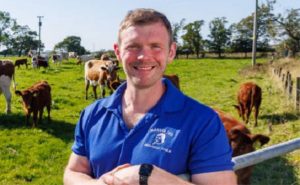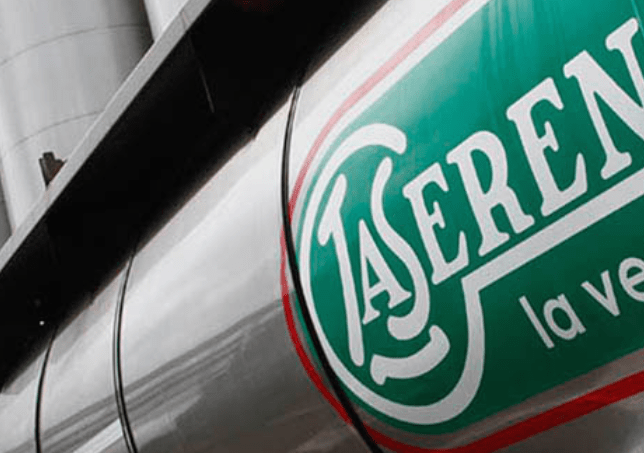Laura Kliman, senior flavor scientist for Impossible Foods, stood in the Redwood City, Calif., test kitchen in mask and hairnet, six ramekins of milk before her.
In a virtual news conference, the plant-based protein company announced that it would use the $700 million it has raised in 2020 to double the size of its research and development team, with the focus on debuting plant-based milk, steak, bacon and fish.
Impossible Foods’ five-person milk team started working on “functional” milk prototypes two years ago, as plant-based milks began to erode demand for traditional cow’s milk. A plant-based milk that functions as cow’s milk — able to be cooked, heated, even used to produce cheese — could be a significant blow to an industry that is already struggling.
Impossible Foods initially focused on a ground beef product. A more pressing matter in the mind of Pat Brown, chief executive of Impossible Foods, but dairy is not far behind: “There are 1.7 billion cows on the planet, a significant fraction used in dairy production. Cows are so incredibly inefficient.”
According to the Food and Agriculture Organization of the United Nations, global greenhouse gas emissions caused by dairy cows increased 18 percent between 2005 and 2015. The challenge now is how to satisfy the demand for milk while working toward a lower-carbon future.
The plant-based milk category has seen consistent double-digit increases in sales even as cow’s milk consumption has declined, according to a Nielsen study in June 2018. But, Brown said: “The plant-based milks out there are inadequate. [Our goal] is to make something that for a dairy milk lover is better than anything that comes from a cow.”
Alan Bjerga, senior vice president of communications for the National Milk Producers Federation, an industry organization, said that Impossible’s attempted incursion is more likely to affect other plant-based beverage producers.
“These beverages have been on the market for 30 years, and they tend to cannibalize each other’s market share,” he said. “For example, oat’s big gains have come much more at the expense of soy-beverage consumption than it has at dairy. If people who like plant-beverages can find a plant-based beverage that is more like real milk — a superior product — than what’s currently being offered, that could cause some concerns for people who are currently grinding up almonds, soy, or oats or whatever else they can mix with sugar water and artificial coloring so they can sell it for twice the price of real milk.”
Kliman said the Impossible Foods product will taste like cow’s milk, froth like it, cook like it and, she demonstrated, integrate with a cup of hot coffee without precipitating out (soy and nut milk drinkers are familiar with the gritty texture imparted by adding the products to hot beverages).
Tuesday’s demonstration was of a not-yet-finalized recipe, made of plant-based ingredients including a special de-flavored and deodorized soy protein created in-house, and will probably continue to be evaluated in terms of taste, nutrition, versatility and sustainability.
The animal dairy industry has pushed back vigorously against the proliferation of plant-based milks, arguing in at least 10 lawsuits that consumers are confused by ambiguous labeling and nomenclature that equates soy-, oat- or nut-based milks with animal dairy. The dairy industry has urged states to append qualifiers like “fake” or “artificial” to plant-based milk.
“In fact, there is no ‘consumer confusion’ about Impossible Burger’s ingredients,” said Rachel Konrad, chief communications officer for Impossible Foods. “The skyrocketing growth of Impossible Burger is testimony to the fact that consumers are crystal clear that they are getting a product without any animal ingredients whatsoever.”
American dairy farmers have seen devastating losses in recent years. More than 3,200 dairy farms shut down in 2019, according to the U.S. Agriculture Department, with two of the biggest, Borden Dairy and Dean Foods, filing high-profile bankruptcies because of a decline in consumption, diminished margins and increased costs. The pandemic — and its effect on the food-service industry — resulted in further supply-chain disruptions and widespread dumping of excess cow’s milk.
Still, cow’s milk dairy is found in 98 percent of U.S. households, and milk sales are up 3 percent in 2020, according to Barbara O’Brien, president of Dairy Management Inc., a trade association.
“The dairy industry has invested in decades of nutrition research and scientific and regulatory rigor to validate the safety, efficacy and wellness benefits of our products for consumers. We couldn’t be more confident that dairy will continue to earn a place on families’ tables,” O’Brien said.
Brown has famously said that, having raised $1.5 billion in investment money since its 2011 launch, his company’s goal is to eliminate animal agriculture by 2035. He said Tuesday that the company was still on track: “The automobile replaced the horse in two decades; the digital camera replaced film in less than 10 years.”
In a period of unprecedented hardship for American dairies and ranchers, this added threat to family farms’ solvency, Brown said, could be mitigated by a functional carbon market that allowed farmers to be compensated for sequestering carbon, reversing global warming and, as Brown said, slowing a “catastrophic collapse in biodiversity.”












